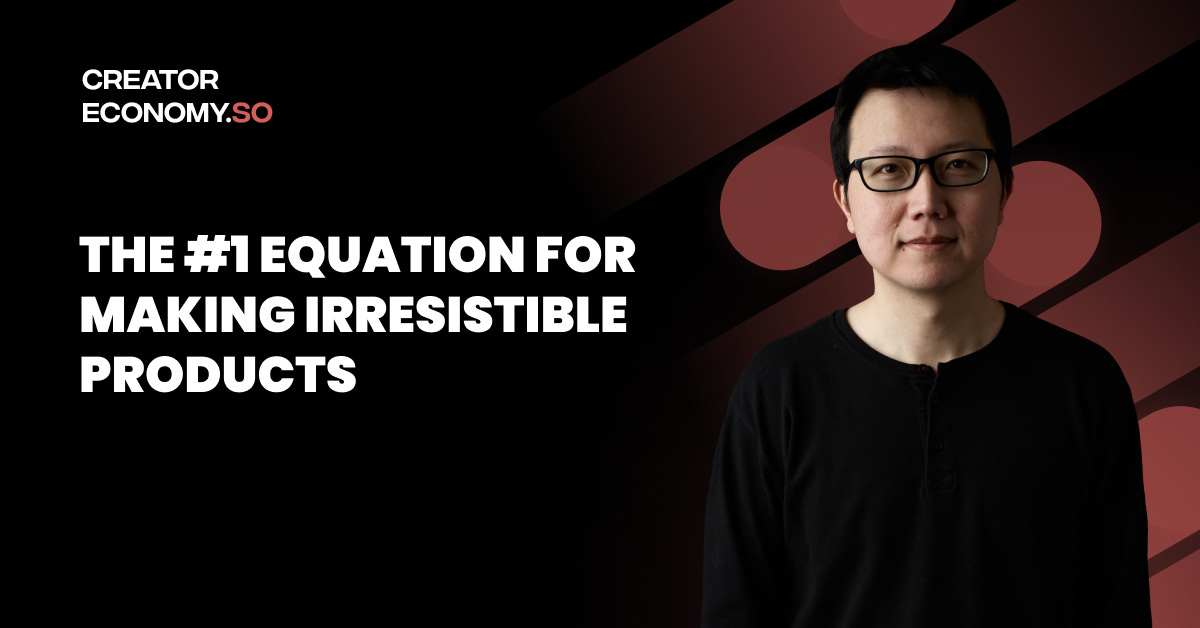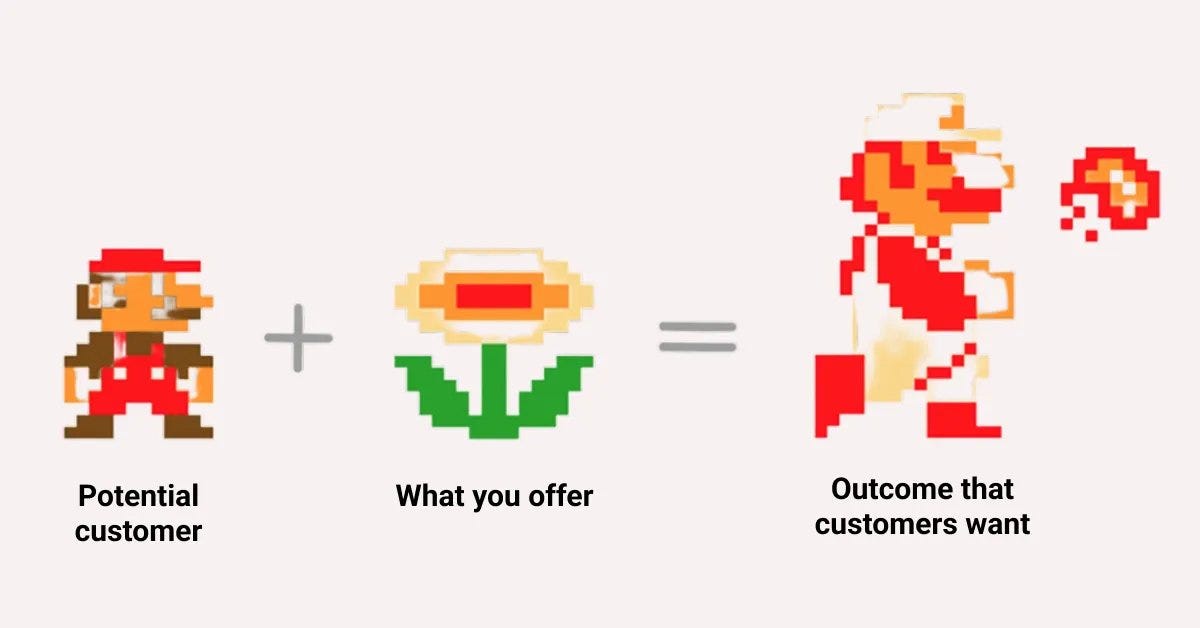The #1 Equation for Making Irresistible Products
How to make an offer so good that people feel stupid for saying no
Dear subscribers,
Today, I want to share an equation for creating a product that people can’t resist.
This is an incredible framework that both product managers and creators can use.
It was created by Alex Hormozi, author of the book $100M Offers. Let’s dive in:
The value equation
Dream outcome
Perceived likelihood of achievement
Time delay
Effort and sacrifice
What is the value equation?

The value equation breaks down what makes a product valuable into 4 components:
Dream outcome: How will this improve my life?
Perceived likelihood of achievement: How likely is this to happen?
Time delay: How long will this take?
Effort & sacrifice: How much work will this take?
The first two create value and the last two destroy value. Now here’s the secret:
Most products focus on the top of the equation, but the bottom is where the magic is.
If you can reduce your customer’s time delay and effort to zero, you’re golden:
Creator: Compared to long expensive masterclasses, Justin Welsh has made millions with his 2 hour course ($150) on growing a LinkedIn audience.
Product: Compared to physical movie rentals, Netflix made watching movies immediate and effortless.
Let’s walk through each component in more detail with examples.
1. Dream outcome
This is what the customer is feeling and experiencing when their dreams come true.
People value your product more if they think it’ll help them close the gap between their current reality and their dreams.
People dream about better health, wealth, and relationships, but if you dig deeper:
The dream usually involves a perceived status increase in a valued peer group.
A dedicated parent might dream about buying the best minivan instead of a sports car because the former will increase their status more amongst their parent friends.
Example
Suppose you have a product that promises the dream outcome of getting fit this summer. You can bring this dream to life through:
Before and after photos
Success stories
2. Perceived likelihood of achievement
This is the customer's perception of whether they'll achieve their dream.
People value your product more if they believe that it’ll make their dream real.
For example, if you had to get surgery, how much more would you pay for a surgeon with 10,000 surgeries under their belt vs. 10?
Example
If you’re promising six pack abs for the summer, you can increase the perceived likelihood of achievement through:
Customer testimonials
Your training credentials
Money back guarantees
3. Time delay
This is the time between a customer buying your product and getting their outcome.
People value your product more if they can achieve their dream in less time.
Reducing the time delay is one the most underrated ways to provide value. If you enter a competitive market with a product that’ll help customers achieve the same dream in half the time - you’ll win.
For example, nobody will want to take an 8 hour masterclass if they believe they can get the same value from a 2 hour course.
Most dreams take a long time to achieve, so it’s important to:
Give customers a big emotional win as close to purchase as possible.
Example
The fitness program could include intermittent fasting or a strict no-carb diet in week 1. This’ll help clients see progress faster and give them more confidence.
4. Perceived effort and sacrifice
This is the perceived effort and cost needed to use the product.
People value your product more if they think that they don't have to work hard to see results.
Like it or not, most people are lazy. That's why liposuction costs 100x more than a gym membership.
Example
The fitness program can decrease the perceived effort and sacrifice by providing:
At home workout programs
A full meal plan with easy ingredients
Live coaching
The less effort required, the more valuable the product becomes.
Putting it all together
Use the value equation both when you’re defining a product and when you’re crafting messaging to promote it to customers.
To wrap up our fitness example, a marketing page might include:
Dream outcome: “Get six pack abs this summer.”
Likelihood of achievement: “I spent 10 years coaching 100s of clients. Here’s a list of before and after photos and testimonials from customers like you.”
Time delay: “See results in week 1 with our diet strategy.”
Effort & sacrifice: “Workout at home with a full meal plan and live coaching.”
Remember:
It’s easy to make promises about the dream outcome - but it’s the 3 other drivers of value that’ll really help your product stand out.
Once you know the value equation, you’ll see it being applied everywhere. Let me know in the replies if you have more examples!
Subscribe below to level up your product and creator skills in just 5 min a week:
If you enjoyed this post, consider taking a moment to:
Refer a friend to unlock my 180+ page PM book and paid subscriptions for free.
Sponsor this newsletter to reach 50,000+ tech professionals and creators.





Thanks Peter, this is great!
Great content